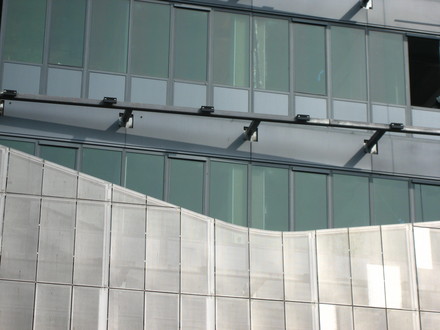TROPOLISM
LEED Certified Buildings Not Always Saving Energy

(Pictured: Cooper Union Building by Thom Mayne/Morphosis, which is going for a LEED Platinum Certification)
Shocker! LEED certified buildings do not always save energy. They never said they would be! The New York Times gets wind of what has been known for a little while, that some LEED rated buildings, particularly the ones at the lowest end of the LEED scale, particularly the ones that got certified when the LEED rating was young, aren't saving energy. Read this 2008 article by Henry Gifford (warning: PDF) to get a LEED critic's view on the matter.
Things to know:
1. Chad Smith is a LEED Accredited Professional, as of earlier this year!
2. LEED was developed to make owners, developers, builders, and I guess architects and engineers all happy. Which means it is very popular yet is imperfect and has a few glaring loopholes, like this one: that LEED accreditation does not automatically mean the buildings will have lower energy consumption.
3. The whole LEED accreditation system is undergoing a revamp, to focus more on water use and energy consumption. Future buildings may be more energy efficient? LEED won't nail this down because there still isn't a systemic demand to monitor the building's performance after it is certified by LEED. But the two most pressing sustainability issues in buildings are water use and energy consumption, so they are on the right track.
4. One of the reasons LEED and green building is so hot right now is because LEED has been very popular. So like Wal-Mart bringing organic food to each of their stores everywhere, LEED has brought the idea of sustainability to the world of building in the United States. It's a huge success, but one that is not fully realized.
5. It is difficult to get a higher LEED rating without being somewhat more energy efficient. So a LEED Platinum building: probably saving energy. But no one actually knows!
6. The Times article implies that buildings can install a bunch of bamboo flooring and get a LEED rating. In fact, Renewable Materials is one of the hardest points to get in the LEED system. Basically it's bamboo anything, cork flooring, and like wool carpets...and that's it. As a percentage of construction, you'd need to cover every surface in bamboo to make it work. So no one is installing that much flooring in lieu of other sustainable strategies.
7. But yes you could get most of your points saving water and putting your building on a sustainable site, and still be running a barely-OK HVAC unit.
8. I said it in February 2009: in 5 years we are going to look at LEED Silver as a ridiculously low standard.
9. Some LEED buildings are undoubtedly kicking ass on the energy consumption measure. Let's hear about those too?
Advertisement
Support our advertisers because they help keep the content free.
If you're interested in advertising, contact us.
